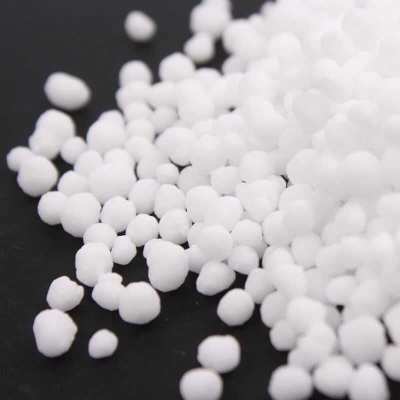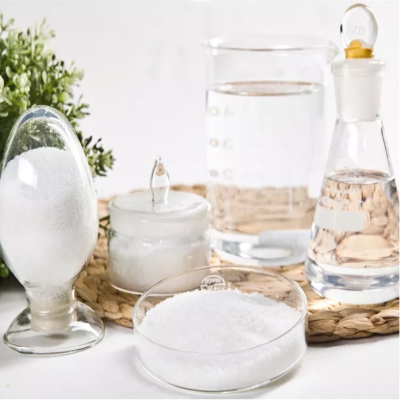-
Categories
-
Pharmaceutical Intermediates
-
Active Pharmaceutical Ingredients
-
Food Additives
- Industrial Coatings
- Agrochemicals
- Dyes and Pigments
- Surfactant
- Flavors and Fragrances
- Chemical Reagents
- Catalyst and Auxiliary
- Natural Products
- Inorganic Chemistry
-
Organic Chemistry
-
Biochemical Engineering
- Analytical Chemistry
- Cosmetic Ingredient
-
Pharmaceutical Intermediates
Promotion
ECHEMI Mall
Wholesale
Weekly Price
Exhibition
News
-
Trade Service
According to foreign media reports, researchers from the Karlsruhe Institute of Technology (KIT) in Germany and Changchun Jilin University in China have developed a very promising anode material-lanthanum lithium titanate (LLTO) with a perovskite crystal structure.
, Can be made into high-performance batteries
.
The team said that LLTO can improve the energy density, power density, charging rate, safety, and cycle life of batteries without the need to reduce the size of the material particles from micrometers to nanometers
.
? People's demand for electric vehicles continues to grow, and with it comes an increase in the demand for smart grids to ensure a sustainable supply of energy
.
Both mobile and stationary energy storage technologies require suitable batteries.
Lithium-ion batteries (LIB) are energy storage devices that can store as much energy as possible in a light and small space
.
The purpose of this research is to improve the energy density, power density, safety and cycle life of such batteries
.
To achieve such results, electrode materials are very important
.
The anode of a lithium-ion battery usually consists of a collector and an active material that stores energy in the form of chemical bonds.
In most cases, graphite is used as the active material
.
However, the anode made of graphite leads to a very low charging rate of the battery and also poses safety problems
.
As an alternative active material, lithium titanate oxide (LTO) has been commercialized.
The anode with LTO has a higher charging rate and is safer than graphite anodes.
The disadvantage is the energy of lithium-ion batteries containing lithium titanate.
The density is low
.
? Therefore, the research team developed another promising anode material-lithium lanthanum titanate with a perovskite crystal structure
.
According to the research, compared with commercial LTO anodes, the electrode potential of LLTO anodes is lower, allowing the battery to have a higher voltage and capacity, and the battery's voltage and storage capacity can ultimately determine the energy density of the battery
.
In the future, LLTO anodes may be used to create safe and high-performance batteries with long cycle life
.
In addition to energy density, power density, safety and cycle life, battery charging rate is also an important factor in determining whether the battery is suitable for demanding applications
.
In principle, the maximum discharge current and the minimum charge time depend on the transport of ions and electrons inside the battery solid body and at the interface between the electrode and the electrolyte material
.
In order to increase the charging rate, the usual approach is to reduce the particle size of the electrode material from micrometers to nanometers
.
But in this study, the researchers found that compared with LTO nanoparticles, the perovskite structure LLTO with a size of a few microns also has a higher power density and charging rate
.
The team believes that this is due to the pseudocapacitance properties of LLTO: not only single electrons can be attached to this anode material, but also charged ions bound by weak forces can also attach to it, and in turn transfer the charge to the anode.
On
.
The researchers explained: "Due to the larger particles, LLTO can also make electrode manufacturing simpler and more economical
.
"
, Can be made into high-performance batteries
.
The team said that LLTO can improve the energy density, power density, charging rate, safety, and cycle life of batteries without the need to reduce the size of the material particles from micrometers to nanometers
.
? People's demand for electric vehicles continues to grow, and with it comes an increase in the demand for smart grids to ensure a sustainable supply of energy
.
Both mobile and stationary energy storage technologies require suitable batteries.
Lithium-ion batteries (LIB) are energy storage devices that can store as much energy as possible in a light and small space
.
The purpose of this research is to improve the energy density, power density, safety and cycle life of such batteries
.
To achieve such results, electrode materials are very important
.
The anode of a lithium-ion battery usually consists of a collector and an active material that stores energy in the form of chemical bonds.
In most cases, graphite is used as the active material
.
However, the anode made of graphite leads to a very low charging rate of the battery and also poses safety problems
.
As an alternative active material, lithium titanate oxide (LTO) has been commercialized.
The anode with LTO has a higher charging rate and is safer than graphite anodes.
The disadvantage is the energy of lithium-ion batteries containing lithium titanate.
The density is low
.
? Therefore, the research team developed another promising anode material-lithium lanthanum titanate with a perovskite crystal structure
.
According to the research, compared with commercial LTO anodes, the electrode potential of LLTO anodes is lower, allowing the battery to have a higher voltage and capacity, and the battery's voltage and storage capacity can ultimately determine the energy density of the battery
.
In the future, LLTO anodes may be used to create safe and high-performance batteries with long cycle life
.
In addition to energy density, power density, safety and cycle life, battery charging rate is also an important factor in determining whether the battery is suitable for demanding applications
.
In principle, the maximum discharge current and the minimum charge time depend on the transport of ions and electrons inside the battery solid body and at the interface between the electrode and the electrolyte material
.
In order to increase the charging rate, the usual approach is to reduce the particle size of the electrode material from micrometers to nanometers
.
But in this study, the researchers found that compared with LTO nanoparticles, the perovskite structure LLTO with a size of a few microns also has a higher power density and charging rate
.
The team believes that this is due to the pseudocapacitance properties of LLTO: not only single electrons can be attached to this anode material, but also charged ions bound by weak forces can also attach to it, and in turn transfer the charge to the anode.
On
.
The researchers explained: "Due to the larger particles, LLTO can also make electrode manufacturing simpler and more economical
.
"







